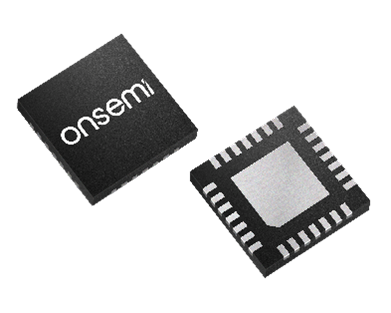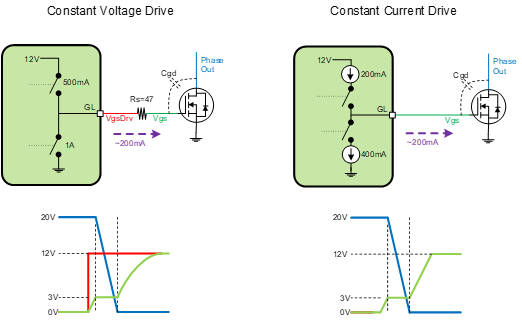Introduction
Industrial or factory automation is one of the fastest-growing end applications for BLDC motors in the industrial market segment. As factories switch to BLDC from more traditional brushed or stepper motors for higher efficiency and performance, the need for 3-phase gate drivers also grows. End applications such as factory robots and collaborative robots use multiple motors in their designs.
The NCD83591 is a 60 V, 3-phase gate driver designed for brushless DC (BLDC) motor applications, integrating three independent half-bridge drivers along with one sense amplifier to provide a simple and easy-to-use gate driver. This solution offers high power density and ease of use with its small package size and gate drive architecture, making it ideal for industrial applications. The 60 V maximum input voltage of the NCD83591 provides plenty of headroom for driving these motors, typically rated from 12 to 42 V for most industrial automation applications. Coupled with the high power density and ease of use, which is valued heavily by industrial customers, the NCD83591 provides an ideal solution for these applications.
Power Density
The NCD83591 is in a 4 mm x 4 mm QFN-28 package, including one integrated and fully configurable current-sensing amplifier, a 14 V regulator for low-side generation, and a charge pump for high-side generation. This product is the industry’s smallest 60 V, 3-phase gate driver, which integrates at least one sense amplifier. The small package size and the single integrated amplifier provide the perfect solution for driving a BLDC motor when solution size is imperative. This product allows customers to quickly implement trapezoidal commutation to drive the motor while simultaneously achieving a small solution size through a minimized external component count. The 3-phase nature of the driver with the integrated half-bridge drivers provides a significant size improvement over using a discrete implementation of traditional stand-alone half-bridge driver ICs.
Ease of Use-Trapezoidal Motor Control
With the single integrated amplifier, the NCD83591 gate driver is the ideal product to use for a trapezoidal motor control commutation. This method is the most common BLDC commutation across the industrial market as a sweet spot between optimal torque and design simplicity. Although Field Orientated Control (FOC) and Direct Flux Control (DFC) commutation methods are gaining popularity for more complex motor control applications, trapezoidal commutation remains the standard from an ease-of-use perspective in the 12 to 40 V BLDC industrial market.
Ease of Use-Constant Current Gate Drive
The gate drive architecture is another advantage when using the NCD83591 3-phase gate driver. The product implements a constant current gate drive instead of a traditional constant voltage gate drive. The constant current drive provides the same switching net (motor phase winding) transition time but saves the cost of a series gate resistor and a smaller driver circuit. Eliminating the need for a series gate resistor also helps prevent self-turn-on. See Figure 2 below for more detail. However, the most significant advantage of a constant current gate drive is the ability of the IC to sense the actual gate-to-source (Vgs) voltage of the FET that it is driving. Gate sensing is a feature that sets NCD83591 apart from an ease-of-use perspective, as it allows for benefits such as dead time optimization and true cross-conduction protection.
Dead time is usually programmed into the MCU to allow one FET of a phase to turn off before turning on the other. There is usually extra time programmed to ensure that cross-conduction does not occur, as the timing can vary with temperature, supply, and age. The NCD83591, with its ability to sense the gate-to-source voltage, will not allow one FET side to turn on until its opposite FET in the same phase has turned off. This allows the MCU to ignore dead time programming as the IC will handle it, resulting in minimum dead time during PWM, regardless of delays. The product will also sense an external fault powering a FET when it shouldn’t be enabled and thus react accordingly by disabling the opposite FET in the same phase.
Learn more about the NCD83591 motor driver and other motor driver solutions from onsemi.


